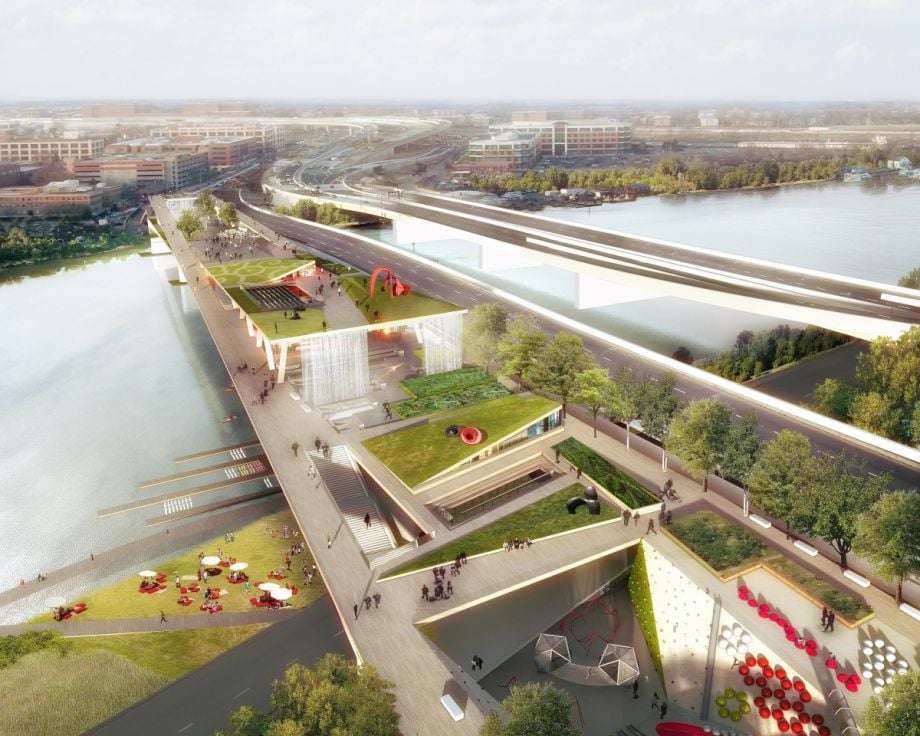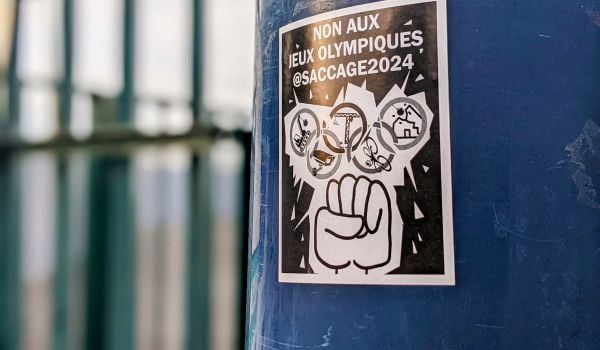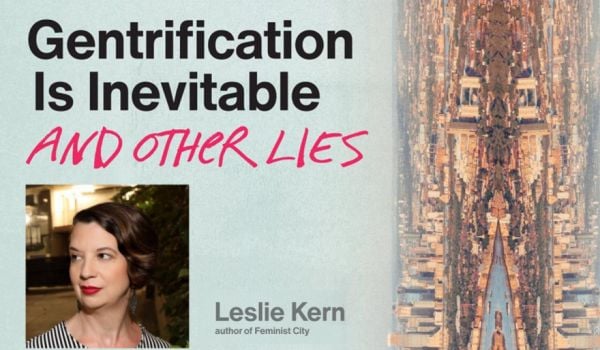For passersby along the Anacostia River in Washington, D.C., it’d be easy to assume there hasn’t been much progress building the 11th Street Bridge Park, a 1,200-foot-long, pedestrian-only expanse designed to connect the neighborhoods of Capitol Hill and Anacostia with green spaces, cultural amenities, and gathering spots 30 feet above the river. The piers on which the park will sit remain untouched; the intensive construction required to build has yet to begin.
But there’s a frequent saying from the team coordinating the ambitious project, the nonprofit Building Bridges Across the River, and the many organizations they’ve teamed up with since plans were announced, in 2014.
“It’s so much more than a park,” says Scott Kratz, director of the 11th Street Bridge Park Project.
The goal of connecting two neighborhoods separated by the river — one being known for gentrification and growing wealth, the other known for poverty — has never been taken lightly. From the outset Kratz envisioned the bridge as a way to bridge the divide between the neighborhoods of the Navy Yard and Capitol Hill on the west side, where the 2014 median household income was $91,000, and the neighborhoods of Anacostia and Congress Heights on the east side, where it was $32,000.
In that regard, the four-person team has plenty to show for itself. Building Bridges released an Equitable Development Plan in 2015, following a year-long community process that included hundreds of neighborhood meetings on both sides of the river. In Fall 2017, JPMorgan Chase announced $5 million in funding over the next three years to support the plan’s implementation, including $3 million dedicated to preserve existing affordable housing.
Gentrification has already creeped east across the river, “so we’re looking for ways to allow homeownership to be there now, so people can stay and not get pushed out or displaced,” says Vaughn Perry, equitable development manager at Building Bridges.
A major piece of that is the creation of a community land trust, which received an infusion of cash from JPMorgan. Though the land trust is not yet a standalone nonprofit, Building Bridges partnered with City First Homes so the organization can serve as an incubator as the trust purchases properties. “We want to purchase the properties now because if we wait one or two years down the line, it might not be financially sustainable,” Perry says.
The plan anticipates that the community land trust will be able to preserve affordability of homes for sale as well as for rent. Eighty percent of residents east of the river are renters, Perry says.
The goal with the community land trust is to establish an effective model, “to show what the investment is doing, and that this is working,” Perry says.
City First Homes helped set up the governance of the trust, currently led by an advisory committee made up of community members, other stakeholders and experienced housing professionals — the “tripartite” model that has become a standard among community land trusts around the country. After a community vote, the trust has been named the Douglass Community Land Trust, after Frederick Douglass.
“We’re taking a dual track, to set up a solid foundation of governance while alerting people on the opportunities coming up,” says Adam Maloon, assistant vice president of Affordable Housing at City First. Maloon’s team has also facilitated conversations with developers interested in developing housing on the trust’s properties after the land is assembled.
The project partners also established a homebuyer’s club, in February 2016, which offers classes in home ownership and financial literacy. Fifty-three households have purchased homes or are in the process of doing so, according to Perry.
Building Bridges also piloted down payment assistance, providing $10,000 to three different families so far as five-year forgivable loans. With nonprofits Manna and Capital Area Asset Builders (CAAB) they’re also offering individual development accounts, paired up with the homebuyers club, providing match dollars as an incentive for families to save up for closing costs and down payments.
For renters, there have been tenants rights workshops held regularly on each side of the river. D.C. has a unique law that has gives tenants an opportunity to purchase their building before their landlord can put it on the open market.
The JPMorgan funding also earmarked $1 million for the equitable development plan’s small business initiatives, including micro-loans (small business loans typically up to $5,000) and training and technical assistance for existing small businesses and other businesses that could benefit from the economic opportunities of the park. The Washington Area Community Investment Fund is administering these funds.
Another $500,000 from JPMorgan will go into workforce development; Building Bridges has teamed up Skyland Workforce Center and the Washington Area Community Investment Fund to kick off training sessions, many of which will train future contractors and construction workers for the bridge development — something residents east of the river have been demanding.
“We’re talking with developers bringing projects to Ward 8 specifically, so we know what skills and training they are looking to hire from the community. We can build that pipeline,” Perry says.
As for the park itself, Katz explains the estimated $55 million construction endeavor has been tweaked after engineering studies, slimmed down from 139 feet to 116 feet at its widest point. The group is finalizing a feasibility report, and phase two of pre-construction will kick off in the next few months, which Kratz says will take the design all the way up to construction drawings, initiating the environmental assessment, and permitting.
“The question we’ve asked ourselves about the park is, ‘who is this for?’” Kratz adds. “First and foremost, we’re building a park for the residents who helped design it.”
This article is part of The Power of Parks, a series exploring how parks and recreation facilities and services can help cities achieve their goals in wellness, conservation and social equity. The Power of Parks is supported by a grant from the National Recreation and Park Association.
EDITOR’S NOTE: This article originally misstated the amount of JPMorgan Chase’s funding for the equitable development plan. We’ve corrected the error.

Emily Nonko is a social justice and solutions-oriented reporter based in Brooklyn, New York. She covers a range of topics for Next City, including arts and culture, housing, movement building and transit.
Follow Emily .(JavaScript must be enabled to view this email address)


_600_350_80_s_c1.jpg)













